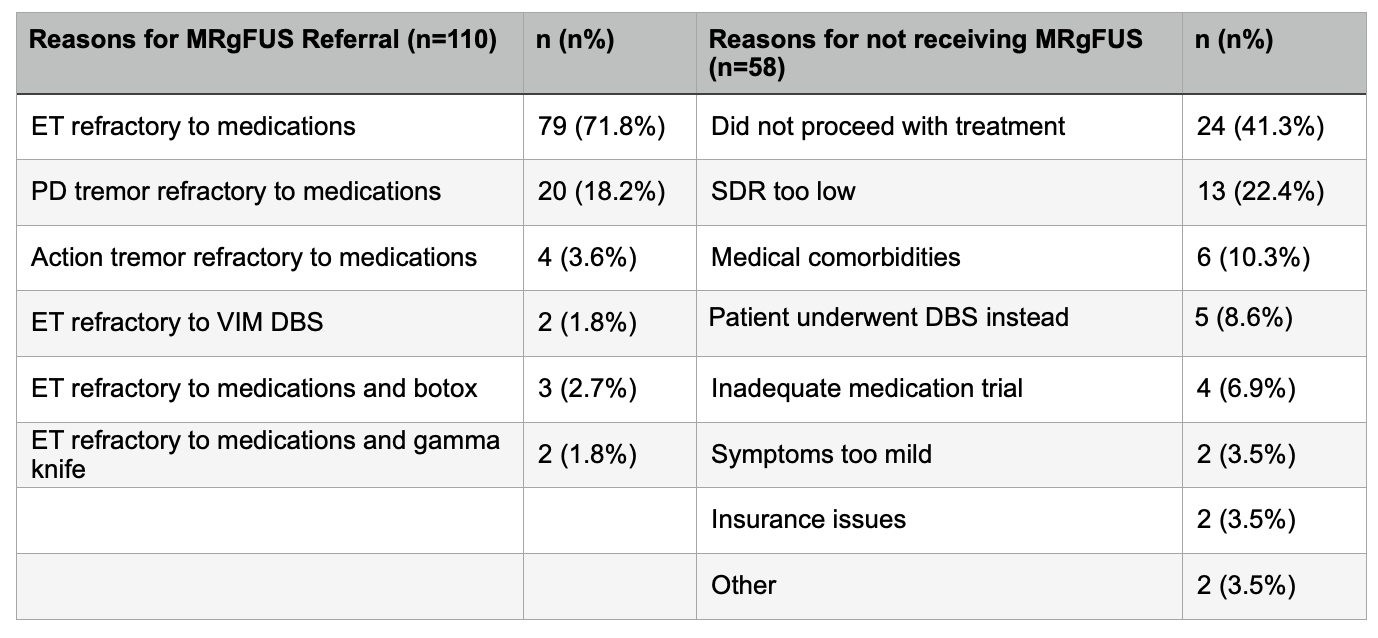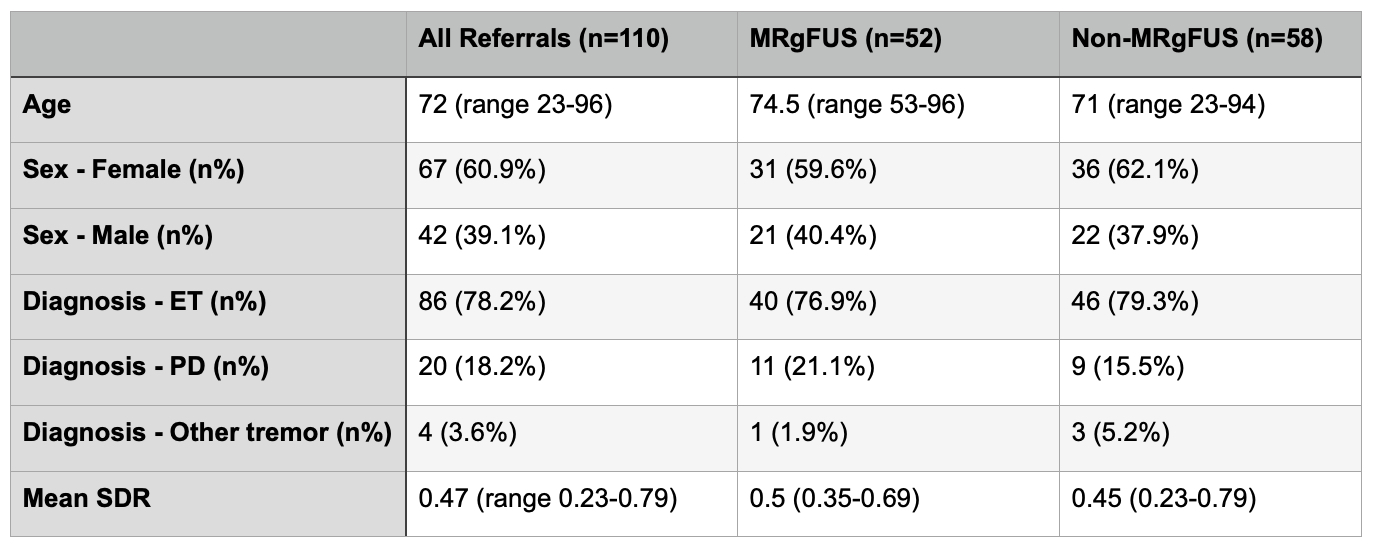Objective: To evaluate referrals for MRI-guided focused ultrasound (MRgFUS) in terms of patient characteristics, reasons for referral, and decision outcomes.
Background: Transcranial MRI-guided focused ultrasound (MRgFUS) is a powerful, incisionless technique, utilizing MR thermometry to create a permanent lesion in the brain. It has been shown to be effective for treatment of tremor in essential tremor (ET) [1,2]. and Parkinson’s disease (PD) [3]. In patients with ET specifically, follow-up data has demonstrated sustained benefit of tremor control for up to 5 years [4]. In this study, we retrospectively analyzed data of patients who were referred for MRgFUS in the treatment of ET and PD in order to ascertain patient characteristics, reasons for these referrals, and decision outcomes.
Method: We performed an updated retrospective chart review of 110 referrals for MRgFUS thalamotomy over a 3.5-year time period from June 2017 to November 2020. We gathered patient characteristics including sex, age, diagnosis, skull density ratio, and decision outcomes based on the initial visit and follow up documentation.
Results: A total of 110 patients over the referral period were reviewed, of which 52 (47%) underwent MRgFUS. Patient characteristics are detailed in [table 1]. Mean age of referral was 72. More referred patients were female (60.9%) than male. Mean skull density ratio (SDR) was 0.47 for all referrals and 0.50 for those who received MRgFUS treatment. Reasons for referral and reasons for not receiving MRgFUS treatment are detailed in [table 2]. The most common reason for referral was ET refractory to medications (71.8%). The most common reasons for not receiving the treatment included patients who did not proceed with any treatment (41.3%), patients who had an SDR that was too low (22.4%), and patients who had significant medical comorbidities (10.3%).
Conclusion: The majority of patients referred to our center for MRgFUS thalamotomy over a 3.5-year time period were female, over the age of 70, and diagnosed with ET refractory to medications. The most common reasons for not receiving MRgFUS were patients that did not follow up or decided not to proceed with treatment, followed by low SDR or medical comorbidities. Future work will seek to further elucidate specific reasons that patients decided not to proceed with treatment.
References: 1. Elias WJ, et al: A randomized trial of focused ultrasound thalamotomy for essential tremor. N Engl J Med. 2016, 375:730-739. 2. Chazen JL, et al. Cranial MR-guided focused ultrasound for essential tremor. Clin Neuroradiol. 2019, 29:351-357. 3. Bond AE, et al: Safety and efficacy of focused ultrasound thalamotomy for patients with medication-refractory, tremor- dominant Parkinson disease: a randomized clinical trial. JAMA Neurol. 2017, 74:1412–1418. 4. Sinai A, et al: Magentic resonance-guided focused ultrasound thalamotomy for essential tremor: a 5-year single-center experience. J Neurosurg. 2020, 133:417-424.
To cite this abstract in AMA style:
E. Einstein, L. Pan, A. Mogilner. Retrospective review of MRI-guided focused ultrasound (MRgFUS) thalamotomy referrals: updated experience from a single movement disorder center [abstract]. Mov Disord. 2021; 36 (suppl 1). https://www.mdsabstracts.org/abstract/retrospective-review-of-mri-guided-focused-ultrasound-mrgfus-thalamotomy-referrals-updated-experience-from-a-single-movement-disorder-center/. Accessed November 8, 2025.« Back to MDS Virtual Congress 2021
MDS Abstracts - https://www.mdsabstracts.org/abstract/retrospective-review-of-mri-guided-focused-ultrasound-mrgfus-thalamotomy-referrals-updated-experience-from-a-single-movement-disorder-center/


